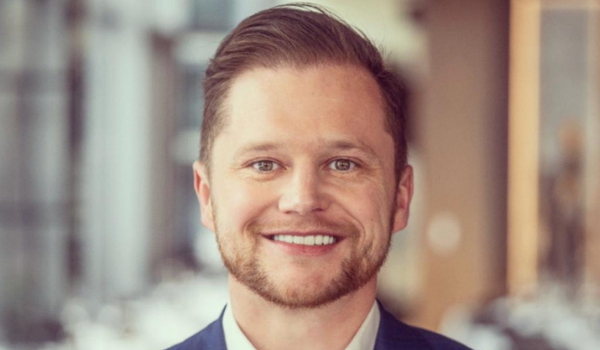Sarson Funds, Inc.
Ten years ago, Jonathan Cagle was a financial advisor investing client portfolios in traditional asset classes.
Then he encountered digital assets and things changed…
“There’s almost nothing that can compete with this technology and the opportunities that can be found here,” said Cagle. “There was a point where I almost felt like I was being disingenuous with clients. I could no longer in good faith tell someone to put their money with me into a traditional financial product instead of a spectrum of cryptocurrency holdings. I couldn’t operate in bad faith.”
Today, Cagle acts as a portfolio manager and research analyst for Sarson Funds, a crypto asset manager and educational resource for financial advisors.
At Sarson, Cagle manages a DeFi Yield Farmer Portfolio, where he invests in yield-generating crypto assets in the decentralized finance space—no centralized exchanges can be used in the portfolio.
“These assets have high growth potential but also high yield which allows you to negate some of the volatility when prices go way down in the crypto market – which still happens a lot,” said Cagle. “The assets also allow you to gain a stream of income from the fund, which allows you to capitalize on and maximize those market run ups.”
How To Research Crypto
A lot of Cagle’s skill and knowledge translated easily from traditional finance to the crypto universe, including in-depth research and due diligence on investments. For every trade Cagle makes, he conducts at least three or four hours of research.
Each trade is approached from a technical, fundamental, micro, and macro perspective, beginning with a conviction about the future.
“I try to paint a mental picture of the infrastructure of everything, the way things will be five years from now, and then build investment premises on those foundations,” said Cagle. “I look for which cryptocurrencies or which projects will help foster the transition from where we are right now towards where I think we will be on a macro level five or ten years out.”
Then Cagle engages in quantitative and qualitative research, including looking at money flows in and out of a project; what is holding projects back, what problems they solve, and how it can be translated to retail and institutional investors.
The final stage is due diligence on the people involved in each digital asset project.
“They say to invest in people, not companies. That holds true in digital assets. You have to know who is involved, what their goals are, what they’ve been involved with in the past, and what their overall objective is. You also need to know their overall values and beliefs towards the digital asset ecosystem as a whole. It gives you much deeper insight into where they’re taking their projects and the ability to be patient during volatile and uncertain times.”
Truly separating the germs of wheat from the considerable chaff in the crypto space means understanding blockchain projects at their most basic forms, said Cagle. Only then can analysts understand how it might supplant or be supplanted by other technology.
Deeper analysis should look at the user experience the project offers every day retail investors and whether or not the project has the on-ramps and capacity to accommodate much-larger dollar amounts from institutional investors.
“For the macro part, I examine what cross-chain metrics they have exposure to—in other words, what is their network interoperability?” said Cagle. “I believe that projects that have the ability to go on a multitude of chains as opposed to pigeonholing themselves on just one major network are going to be the ones that will be the major players in the long run.”
At the end of the process, the amount of time and resources necessary to research investments in the crypto space is comparable to the amount of work required to research traditional investments, said Cagle, but the crypto space offers the potential for better rewards.
Gradually, Cagle has become an advocate for allocating a greater proportion of investment portfolios to the digital assets space.
“A year ago, I might have allocated 5% to 15% to crypto in my portfolio, maybe 20% tops,” said Cagle. “Now I tell everybody that I work with that I put better than 90% of my money into this space. The very reason I decided to make the move from traditional financial markets over into cryptocurrency is that I finally saw the writing on the wall and capitulated when I realized that I can’t compete with the crypto market with a mutual fund portfolio of stocks, ETFs, and options.”
Teaching Them To Fish
Outside of his research responsibilities, Cagle continues to educate investors to empower them to go out and invest in crypto for themselves.
“I know our firm has certain minimums to invest that may not be reasonable or possible for all the people I want to work with right now, but they can benefit if I show them a few simple things such as how to set up a MetaMask wallet, how to move money onto a Coinbase, Kraken, or Gemini exchange. I can also show them how to buy and sell and take advantage of a lot of the same strategies that I was using in my own personal portfolio prior to working with Sarson Funds, because I had already done the research and the due diligence.”
“It’s kind of a give a man a fish versus teach a man to fish concept,” said Cagle. “I know if I help someone else learn what they want to learn and how to keep getting what they want, I won’t have to worry as much about getting what I want in the long run.”
In his traditional finance days, Cagle didn’t grow up or spend time around a lot of high-net-worth potential clients. He had to go out and build relationships himself to grow his AUM.








